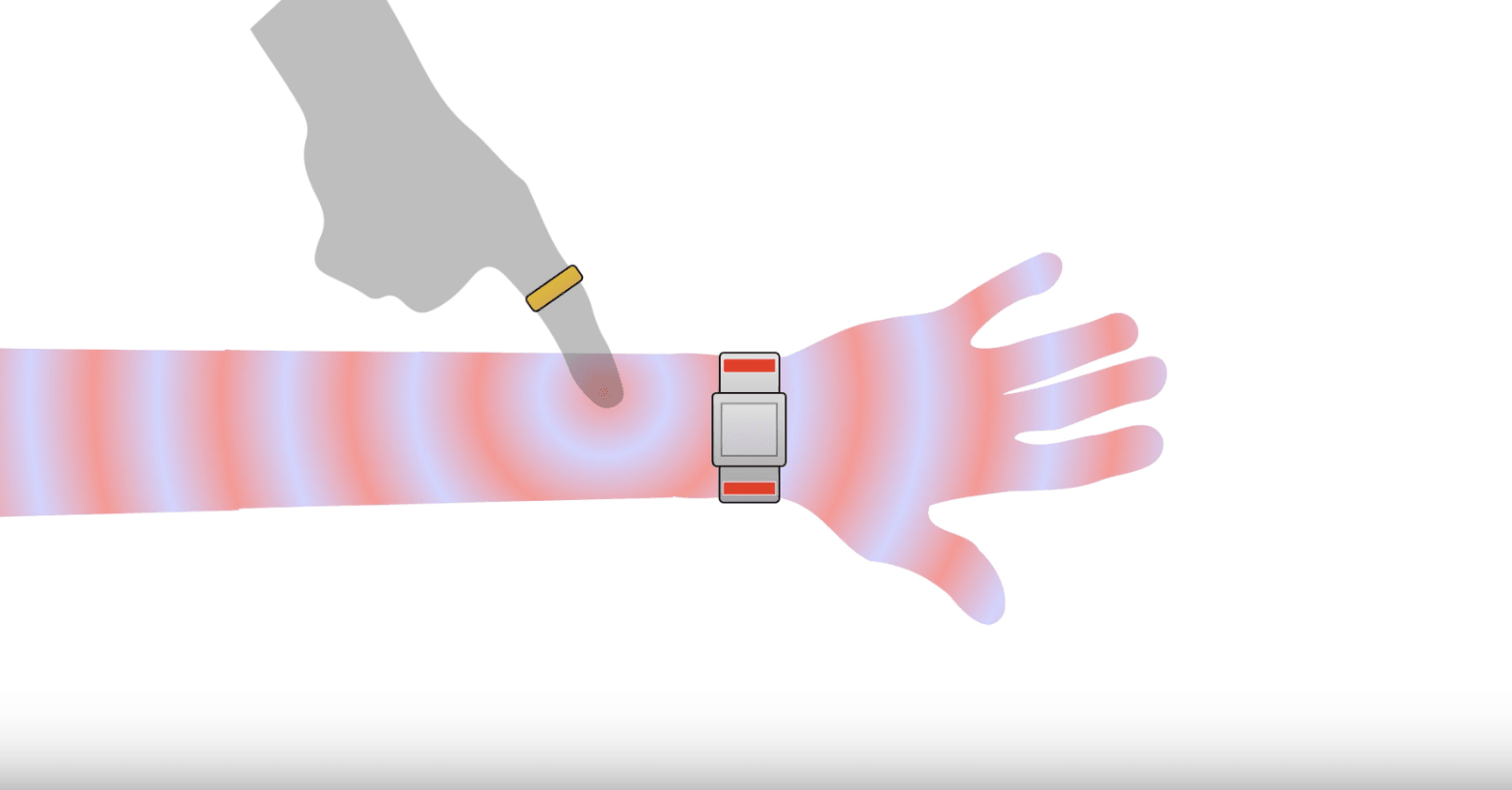
Smartwatches are undeniably cool, but not without problems. One of the biggest annoyances when wearing the latest tech from the likes of Apple, Samsung and others is the small touch interface given to complete tasks that might require a little more space — like playing Angry Birds in the demo video below.
A research team at the Future Interfaces Group, a Carnegie Mellon University research lab, today released a novel look at a possible solution to this problem by turning your skin into additional screen real estate.
The system works by using a signal-emitting ring worn on the finger of your opposite (non-watch) hand and a sensing band attached to the smartwatch. When the finger on the ring hand touches the skin, it sends a high-frequency signal that spans the width (and length) of your arm. From there, the sensor just calculates the distances between itself and the finger with the ring.

It’s also capable of continuous tracking, thus providing the ability to add gesture-based control, as well as the ability to sign your name to a document, or even create hot key commands. Trace an “E” on your skin, for example, and it could potentially open your email inbox.
Additionally, you’re no longer just limited to the touchscreen of your watch to control apps. SkinTrack allows you to drag apps off the watch and on to your arm, thus creating a sort of de facto shortcut menu up and down your arm. Touch a specific spot, say the bend in the elbow, and you’ll open the app you’ve previously placed there.
Sadly, there are no plans to make this tech available to consumers or manufacturers anytime soon, but given the heavy emphasis on wearables, it could spur new ideas by watch manufacturers that further improve how we interact with our smart devices.
via The Verge
Get the TNW newsletter
Get the most important tech news in your inbox each week.





